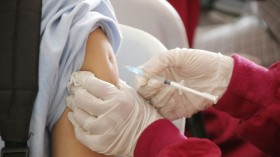Given its capacity to create brand new cells in the bodies of its hosts without posing any threats, stem cell is a blessing to mankind. Now, scientists are pushing the stem cells' capacity to create not only tissues and organs, but bones too.
The study, published in the journal Cell Reports and led by April Pyle from UCLA, involved the usage of somites (clusters of pluripotent stem cells), urging them to create skeletal muscles, bones and cartilage in developing embryos.
According to a press release from the UCLA Newsroom, pluripotent stem cells can become any type of cell in the body. When used in embryos, these stem cells can combine into clusters called somites that develop into tissues, organs and bones.
Read Also: Adult Stem Cells From Fat Could Be the Future of Anti-Aging Treatments
In order to do this, scientists isolated small human somites and measured varying data surrounding them. By analyzing the number of developing genes, the researchers tried to assess whether adding molecules could help the development of organs.
During their first tests, the pluripotent stem cells transformed into somites in just four days. This led the team to push the envelope further. In the following four weeks, the researchers observed that the cells were able to generate not just somites, but skeletal muscle, cartilage and bone.
This new approach on stem cells has been a focus of the Eli and Edyth Broad Center of Regenerative Medicine and Stem Cell Research at UCLA. In fact, the college has a facility dedicated for skeletal bone and cartilage regeneration studies, which, according to them, will help gain a renewed focus on boosting the medicinal capacity of research to treat these conditions.
Pyle and her team says this new discovery opens new possibilities in stem cell application. They are currently determining if the bones created from somites could be used to treat muscle generation diseases such as Duchenne muscular dystrophy.
Read Also: New Study Explores Reprogrammed Skin Cells That Can Kill Brain Tumors
r
© 2024 NatureWorldNews.com All rights reserved. Do not reproduce without permission.


![Retention Ponds, Wetlands Can Decrease Particle Pollution in Aquatic Environment by 75% [Study]](https://1471793142.rsc.cdn77.org/data/thumbs/full/70200/280/157/50/40/retention-ponds-wetlands-can-decrease-particle-pollution-in-aquatic-environment-by-75-study.jpg)


